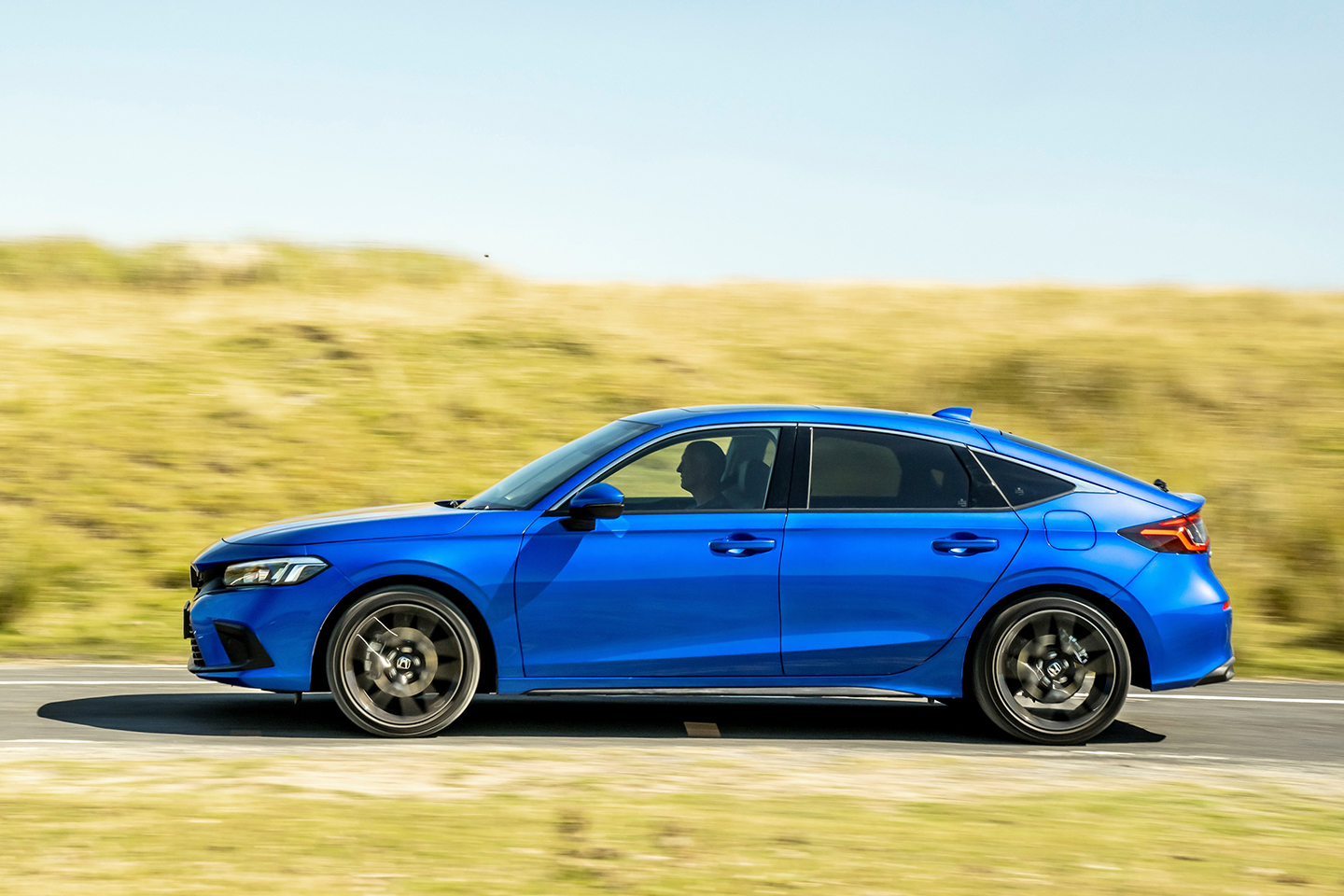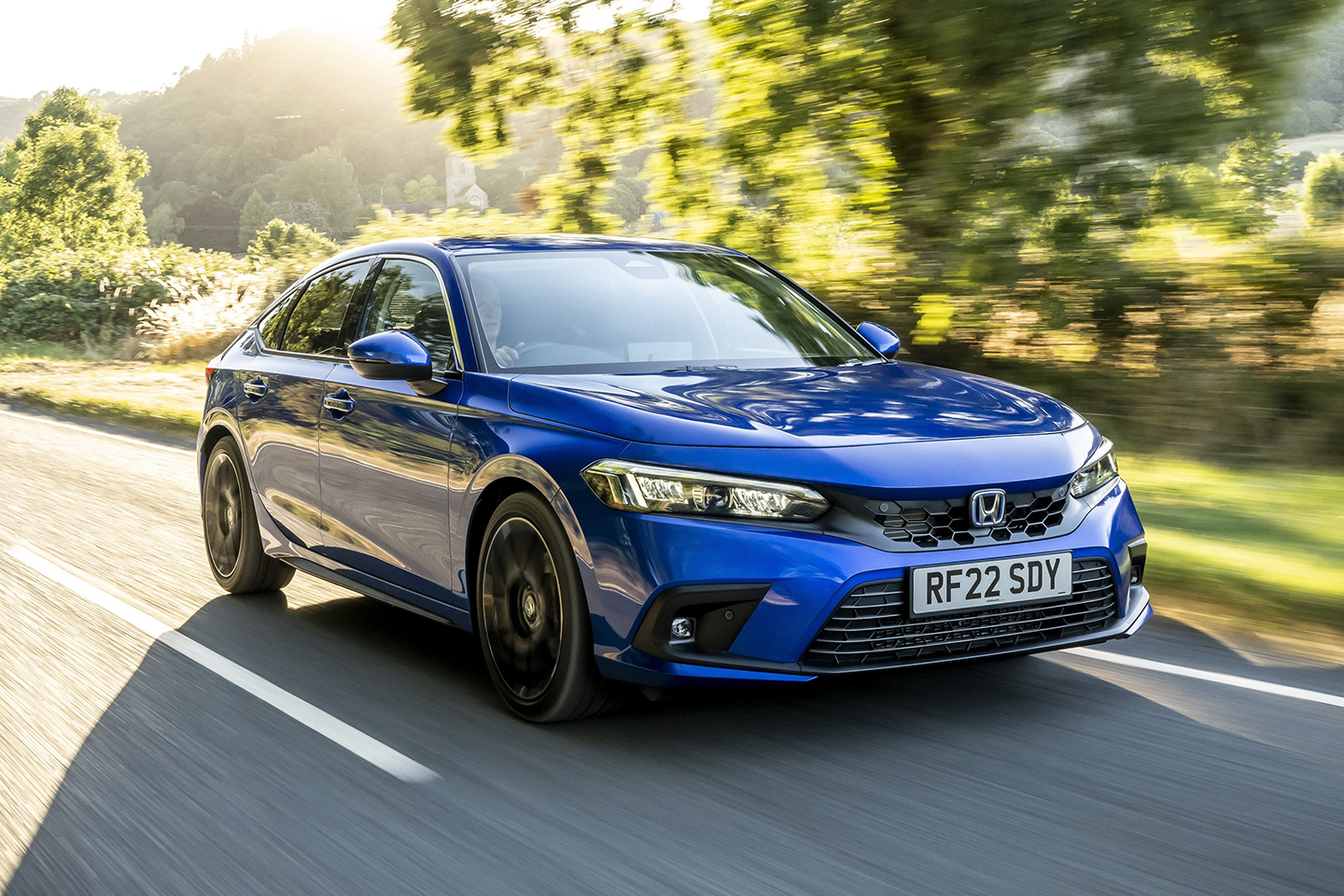
We all know the humble family hatch has fallen out of favour. When even Ford is set to cull the Focus, the writing must be on the wall. VW has the Taigo, T-Roc and Tiguan SUVs, plus the electric ID 3, all at Golf size and money, to tempt buyers into something trendier. And the appetite is undeniably there; customers get the practicality of hatch with a cool lifestyle look and higher driving position (plus more weight and cost), while manufacturers can cash in on shared modular architecture with more profitable bits on top. Combustion engined or otherwise, the fascination ain’t going anywhere.
Which seems somewhat of a pity for cars like the 11th-generation Honda Civic. Spend 10 minutes behind the wheel and it won’t fail to impress; spend a few days driving and you’ll start to wonder why on earth this stopped being desirable. In a reasonably compact (if large for a hatch) footprint, there’s a car that can carry a family and all its stuff, reach 62mph in eight seconds, handle smartly, cruise quietly, return 50mpg without thinking and operate with the kind of metronomic, gratifying precision that makes the Civic feel like it’ll happily do this for decades. Probably will, in fact. And yet you know that any young buyer with a baby and a dog would look at a CR-V – let alone the dozens of other SUVs out there – before thinking Civic. Because people don’t seem to buy five-door hatch now. Which is a shame.
Not helping itself though, is it? If this new look suits a toned-down Type R, it does make for a slightly bland standard hatch. And bland won’t cut it in the world of £30k family cars. It’s Civic tradition to not really resemble the car that came before, but in seeking not to repeat the divisive styling of its predecessor Honda has seemingly created a Civic without a distinct design identity. You know it’s a Civic because it’s big and not a traditional hatchback shape, rather than any proper hallmark features. Or any eye-catching details, really. To these eyes, something like a Peugeot 308 or a new Vauxhall Astra is much more visually appealing, before considering the allure of an SUV. Having done all the styling and then not so much styling, presumably the next Civic will be perfectly done.


Fortunately, the interior is beyond much meaningful fault. The Civic’s touchscreen maybe isn’t the quickest and you’ll once more search for any wow factor – beyond the funky vents – but all the essentials are done faultlessly. It feels really solidly built, the driving position is good, the materials are nice, phone pairing is easy, and it’s all laid out logically. Honda has refined the wheel rather than attempting to reinvent it (if that analogy can extend to interiors) and it really shows. You’re never left screaming at something unresponsive or floundering to find a button that doesn’t exist or wondering if that plastic is good enough, and that’s nice.
Under the Type R, just one powertrain is offered for the Civic, an E:HEV 2.0-litre hybrid with something called an e-CVT. Which sounds like a disaster – fear not. Up to motorway speeds the 143hp engine is used only as a generator to power the 1 kWh battery and 184hp motor, which then turns the front wheels; e-CVT isn’t a continuously variable transmission of the bad old days, instead an imitation that revs through ‘gears’ rather than having the four-cylinder drone at a constant rpm while generating. It sounds very complex in the best Japanese curio fashion, but works very well (and seamlessly) in reality.
There’s great throttle response that makes the Civic feel brisk, a lot of EV running at low throttle loads, 60mpg if you think about it, no huge weight penalty because the battery is so small and no need to plug in. Which, if we assume the Civic customer tends to be a bit more mature and familiar with a petrol pump, is probably a good thing. Even the e-CVT kind of works, mimicking conventional acceleration pretty well. Just don’t expect any fireworks, even with Econ or Normal mode switched for Sport. It’s fast, the Civic, with a few tests having comfortably beaten the claimed 0-62, but it’s not furious. It just quietly goes about getting the job done to a very high standard.


Same goes for how it drives, if the theme isn’t apparent yet. Nothing especially stands out, rather everything operates in a slick, polished fashion. The resistance of the pedals is spot on, even with the brake incorporating adjustable regen, the steering has a satisfying weight to it, traction is strong, and the balance isn’t too nose-heavy. The Civic is really pleasant to drive in every scenario, competent and assured, without one ride or handling USP. Which is probably just how a Civic should be – impressive without being extraordinary. Importantly, there are no glaring flaws, either. And in an automotive world obsessed with style over substance, there’s pleasure to be had from driving something so thoughtfully and thoroughly engineered. Which feels like damning the Civic with faint praise, but we’d take an odd-looking car that’s been set up considerately over a fancy but flawed one every day of the week.
The new model is even refreshingly simple to spec. With that hybrid powertrain buyers can pair one of three specs: entry-level Elegance, Sport and Advance. Nothing more complicated than that, and an Advance like this comes with loads of equipment. Of course. The price is comparable with rivals boasting similar power.
All in all, it’s honestly hard to think what more the average hatchback buyer could want from the newest iteration of Civic. Much like an old Golf – typically the benchmark for such things – it just performs so well across the board, from the way the interior is put together to the way it drives. Nothing about it will ever blow you away, perhaps – but even after a week behind the wheel it also feels like the Civic would be a very difficult car to replace or meaningfully improve upon. Returning customers will be delighted. But let’s hope Honda succeeds in tempting some conquest buyers into its showrooms too, because this is more than good enough to merit consideration on any family car shopping list, whether there are SUVs on it or not.
SPECIFICATION | 2022 HONDA CIVIC E:HEV ADVANCE
Engine: 1,993cc, four-cyl, 1.05kwh battery, electric motor
Transmission: e-CVT
Power (hp): 143@6,000rpm, electric motor 184
Torque (lb ft): 137@4,500rpm, electric motor 232
0-62mph: 8.1 seconds
Top speed: 112mph
MPG: 56.5 (WLTP combined)
CO2: 114g/km
Weight: 1,533kg
Price: £32,995 (Advance as standard; price as tested £33,820 comprised of Sonic Grey Pearl paint for £825)





More Stories
RM Sotheby’s to Auction World’s Only Matte Black Ferrari Enzo
New Engine, or a New Car? Making the Case for Repair vs. Replacement
On This Thanksgiving, I’m Thankful to be a Corvette Owner